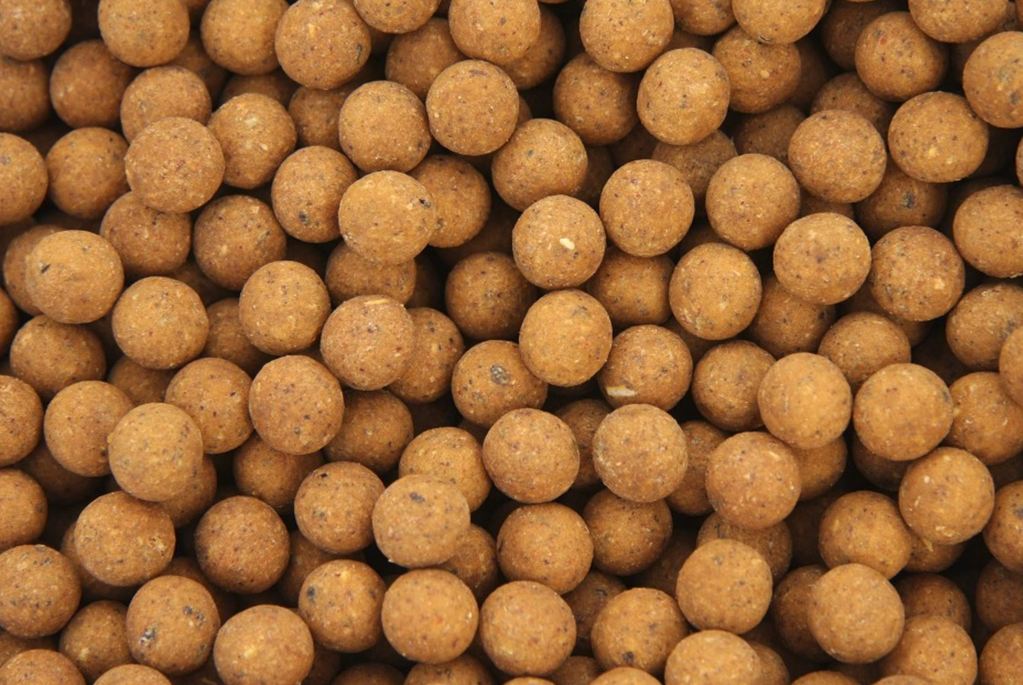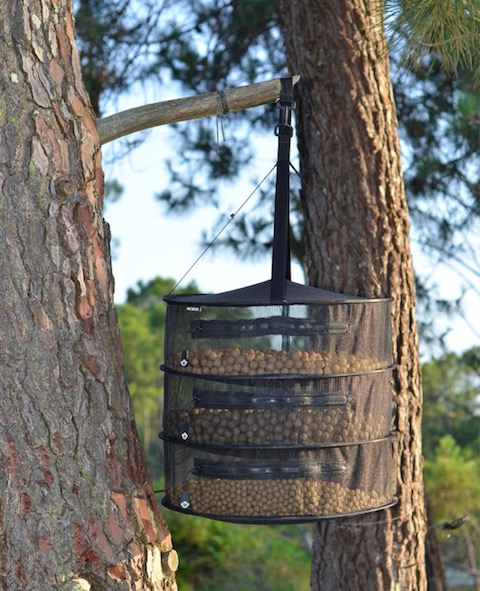The wealth of highly nutritious and readily available ‘ready mades’ lead me to wonder: why on earth would anyone waste valuable time freezing, transporting, airdrying and rehydrating baits for their French carp fishing trip?
Shelf-life or freezer bait? The debate has raged for a while now. To my mind, however, it’s a no-brainer: the extensive range of palatable, balanced shelflife boilies now on offer from the likes of Nash, Nutrabaits, Sticky et al, are not just convenient, effective and affordable – they’re good for the carp, too.
So, if I’m targeting big carp in foreign climes, I’m more than happy to load the van with Mr. Bayes’ finest – secure in the knowledge I’ve given myself the best possible chance of bagging up; and done my bit for the fish too.

And I’m happy to put my money where my mouth is – having, recently and after much soul searching, selected a ‘fishery approved’ shelflife boilie for our new lakes.
How things have changed.
If you’d asked me ten years ago which I’d have chosen for my own fishing, I wouldn’t have given ‘shelfies’ a second glance, having seen 100s of kilos of nasty green slimy balls dragged out of my local syndicate lake.
Snubbed even by the resident invertebrates, and clearly possessing a half-life in excess of that of plutonium, said balls clearly had a close-to-non-existent breakdown rate – a consequence no doubt of the excessive use of preservatives – and no nutritional value whatsoever.
But for the timely action of the fishery owner, the impact on the water quality, and the stock, could have been catastrophic.
Nonetheless, these days shelfies are outselling frozen baits by a factor of ten. So, what has caused this total turn around?
Largely, as with so many ‘matters angling’, it’s all about awareness; the mags, Interweb et al contributing to a wider understanding of what constitutes a nutritionally balanced boilie – and of why such baits are more effective, over the long term – and enlightened customers voting with their feet: choosing genuine ‘food’ baits over cheaper ‘grab bag’ alternatives (many of which are little more than carriers for flavours and colours).
Because, make no mistake: all shelfies are not created equal.
There are shelf-lives, and there are shelf lives. So common sense must prevail. If you’re buying a Fred-in-a-shed bait retailing at three quid a kilo, it will not be as palatable as a known-brand bait, from one of the market leaders, costing a tenner or more a bag.
It’s simple economics, innit?
The best ingredients, fishmeals etc., are expensive. And getting dearer. Which explains why so many long-established baits – no names, no pack drill – have evolved over the years; and not in a positive way.
But that’s a discussion for another forum. Suffice now to say that many very successful anglers have been converted to shelf-life baits, having fished them side-by-side with fresh and frozen equivalents; and finding them either as good or better.
Sure, most shelflife boilies still contain some form of additive, to prevent them from turning. But the better firms use only the minimum required level of human food grade preservative.
Other than that, the mix will be pretty much the same as the frozen equivalent; which is good news for holiday carpers who may not have access to a freezer.
That’s not to say steps should not be taken to keep shelf life baits in top condition. But the ubiquitous use of re-sealable packaging is sufficient to lock-in freshness for months.
Freezer baits by contrast must be kept – yep! – frozen. Which is a big ask if your chosen venue is a day’s drive away. Bigger still if it doesn’t have a freezer.
But, old school carpers out there will interject, what’s to stop you air-drying your baits before you travel?
Fair question, I suppose.
Air-drying is a simple enough (if time-consuming) process, which – for those that don’t know – involves hanging your baits in a warm dry place, in dedicated air-dry bags.
Depending on prevailing conditions, it can be done on the bank, or at home in the garage or shed (actually, the airing cupboard is the ideal place to do it; but this could make you ‘be in trouble’ with your significant other).

If you are planning a Drive and Survive trip to France and you have sufficient vehicle space, you may decide to air dry your baits on the bank. In which case you’ll need to keep your bait as near-to-frozen as possible during the journey – necessitating use of cool bags or, better, an Igloo style cool box.
Either way, you should be sure to remove as much air from each bag as possible and packing them with ice-packs and/or bubble-wrap (which is a great insulator), ensuring your bait’s in the best possible condition when you finally arrive.
Wherever you choose to do it – at home base or in your swim – you’ll need to spread your bait across several bags: the boilies in the middle will inevitably dry more slowly and may otherwise become mouldy before they’re thoroughly dried.
With which in mind, you’ll also need to give them a good shake every day. And if you’re using a range of different sizes, I would also recommend drying each size separately (making life easier on the bank, when you come to catapult or ‘stick’ them out).
The longer they’re air-dried, the more your baits will shrink, and the harder they will become (which can, granted, be an advantage on waters where nuisance fish and crays are present).
Once they are totally dry, you can retain them as-is. Or you can give them a little extra oomph – coating them with your preferred food or attractor liquids (Hemp Oil is great in the colder months).
You can also choose to rehydrate your bait by adding lake water; or the juice from your hemp or whatever particles you may be using.
My question however is: why?!
Why go to all this trouble, when you’ll achieve similar results using a quality shelfie, straight out of the bag.
Sure; when you’re fishing at home – on tricky day ticket waters – chances are, every little edge may count.
But for your annual French carp fishing holiday?
Why make life difficult ?
For the record, at our own fishery, we ultimately commissioned shelf life and freezer versions of our chosen bait.
The former for their ease and convenience.
The latter simply to satisfy a declining band of ‘traditionalists’ who still shun the shelfies.
Steve Calder

Comments